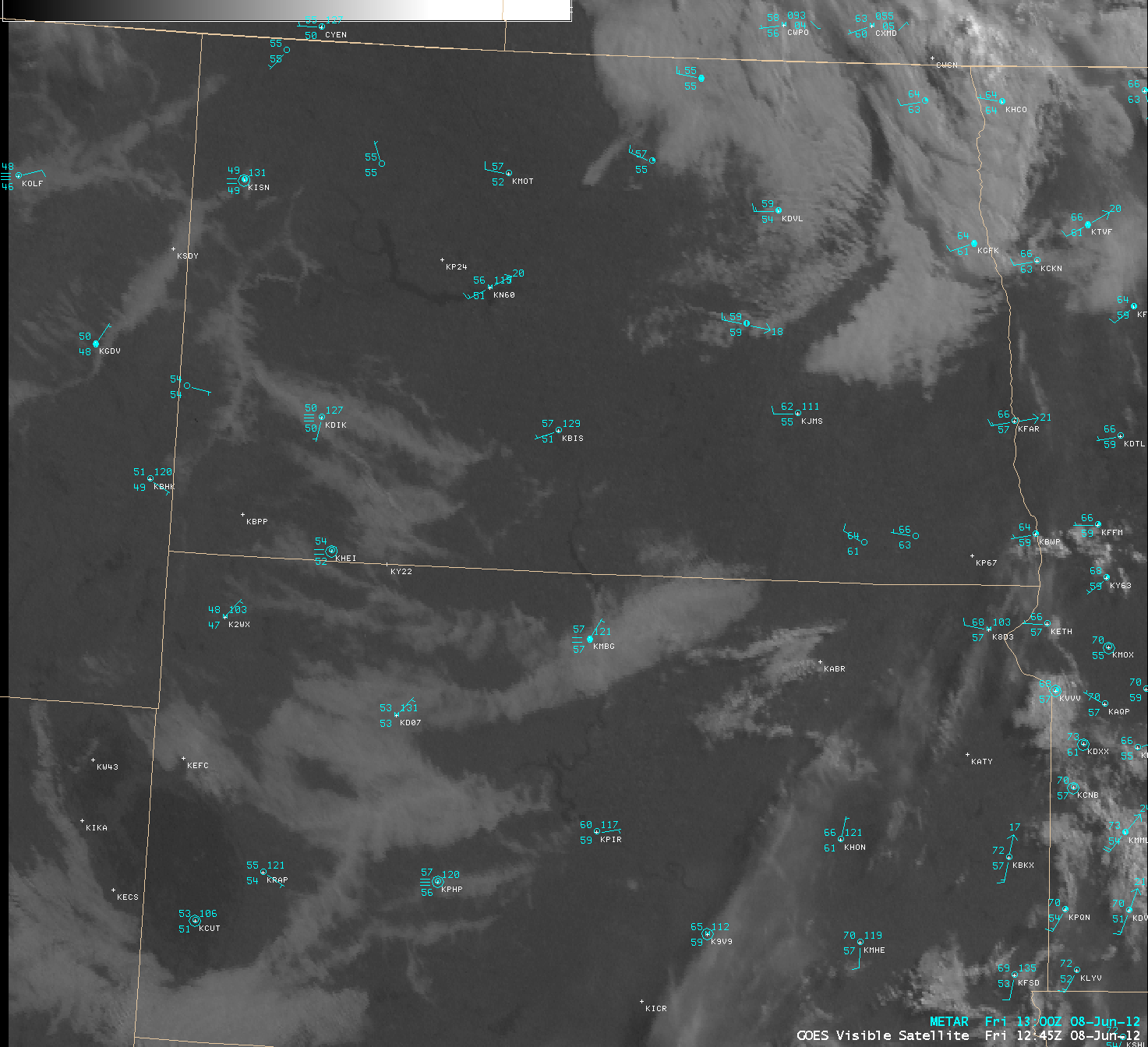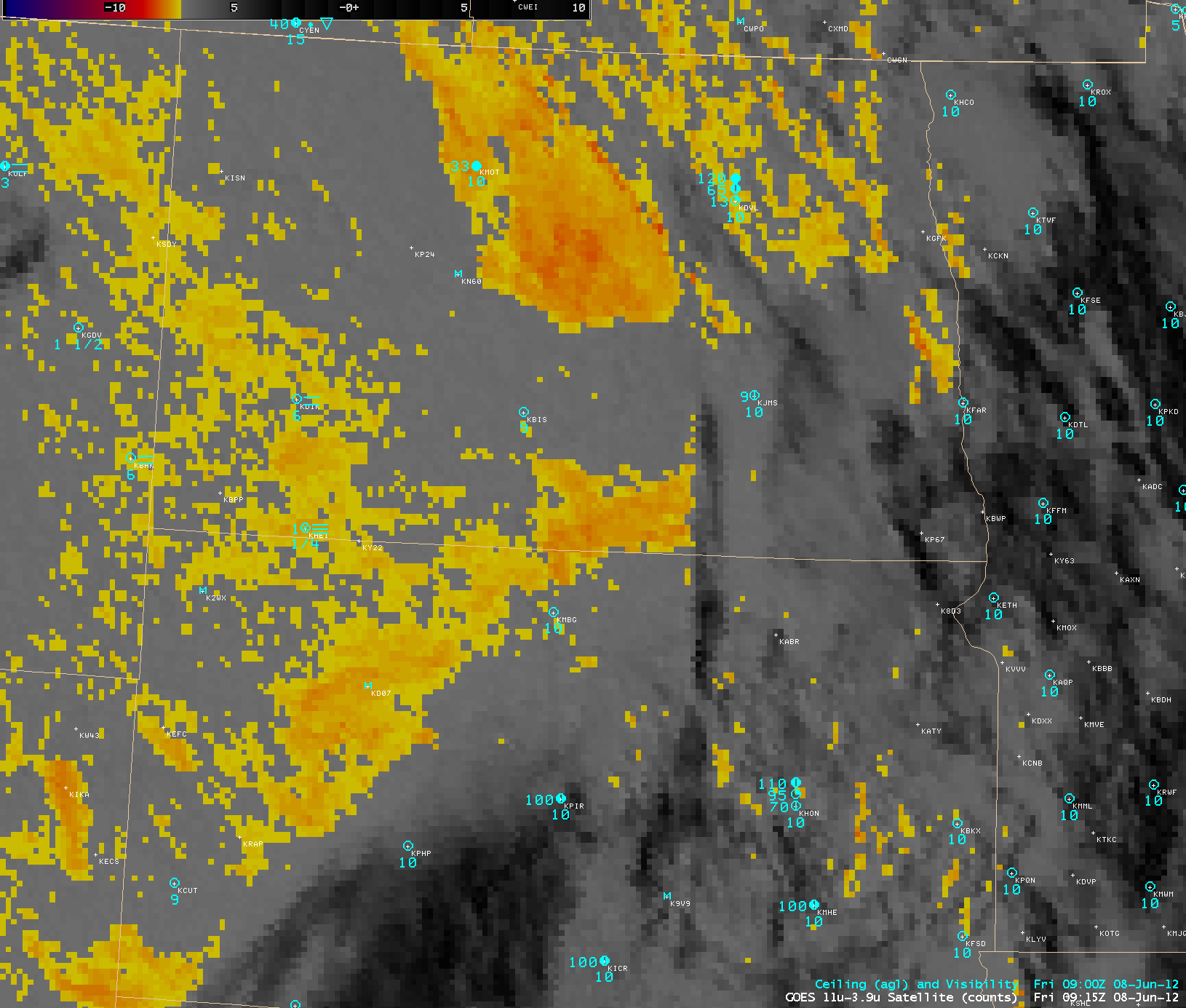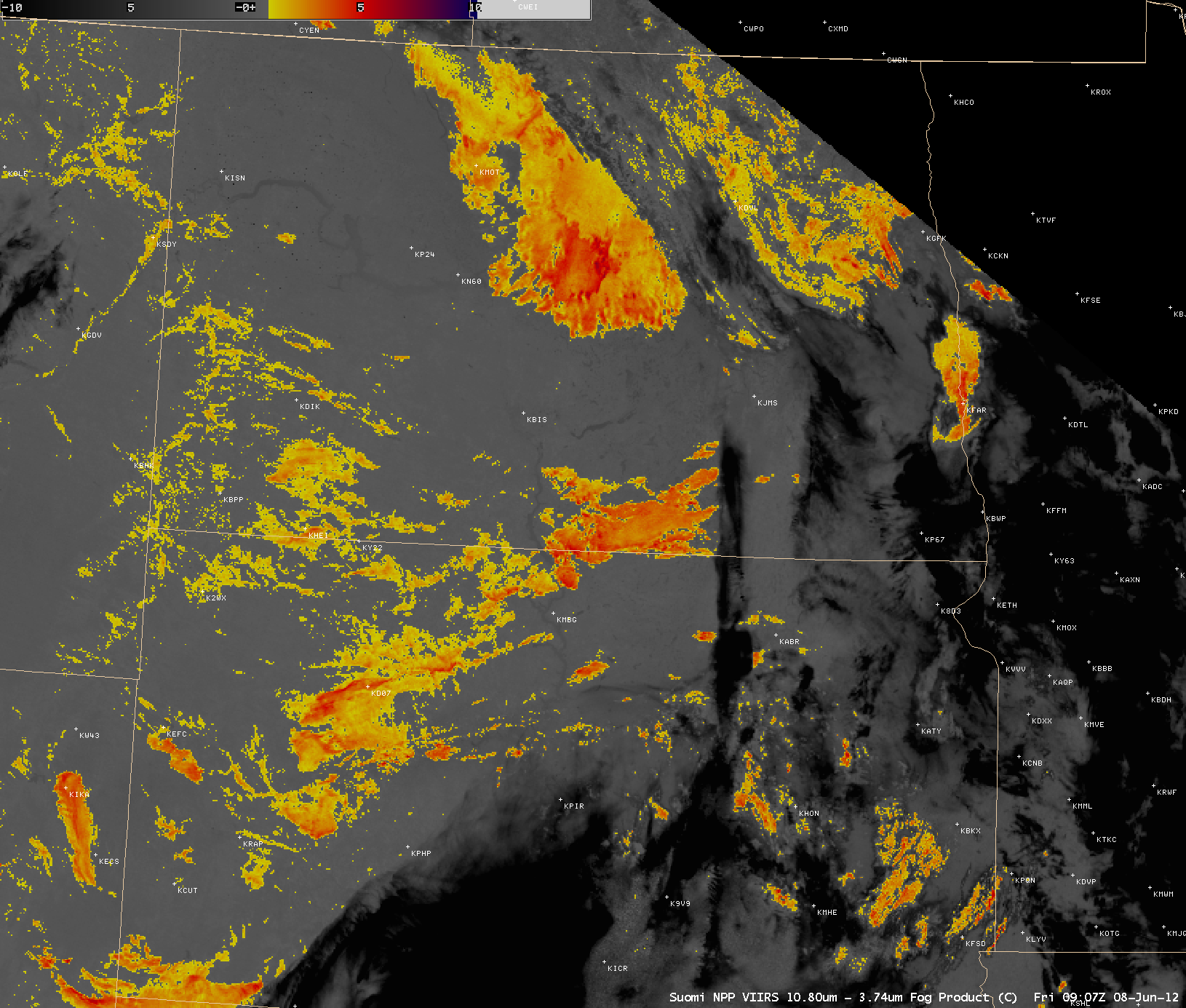Dissipation of fog and low stratus clouds over the north-central US
Parts of the north-central US (namely, western and central North Dakota and South Dakota, and far eastern Montana and Wyoming) received upwards of 0.5 to 1.0 inch of rainfall (Radar estimated precipitation | Regional temperature/precipitation data) in association with a slow-moving frontal boundary on 07 June 2012. With moist soil and strong radiational cooling during the following night (overnight lows included 43 F at Williston, North Dakota, 42 F at Hoover, South Dakota, and 38 F at Medicine Lake, Montana), areas of fog and low stratus clouds developed during the pre-dawn hours on 08 June 2012. AWIPS images of 1-km resolution GOES-13 0.63 µm visible channel data (above; click image to play animation) showed that these fog and low stratus cloud features quickly dissipated after sunrise with solar heating and increasing southeasterly winds.
A comparison of 4-km resolution GOES-13 and 375-meter resolution Suomi NPP VIIRS brightness temperature difference (BTD) “fog/stratus product” images just after 09 UTC or 4 AM local time (below) demonstrated the advantage of higher spatial resolution data for (1) depicting the formation of the more subtle valley fog features, and (2) more accurately defining the edges of low stratus cloud features.
A comparison of the Suomi NPP VIIRS “fog/stratus product” with the corresponding 0.7 µm Day/Night Band (DNB) image (below) showed that with the moon in the waning gibbous phase (75% of full moon), the vertically-thicker low stratus cloud features in the western portion of the satellite scene were more brightly illuminated that the areas of thinner valley fog. It is also interesting to note the widespread bright DNB features associated with natural gas flares and illuminated man camps that are part of the extensive drilling operations across the Bakkan oil shale field (primarily in northwestern North Dakota; MSNBC news story).




